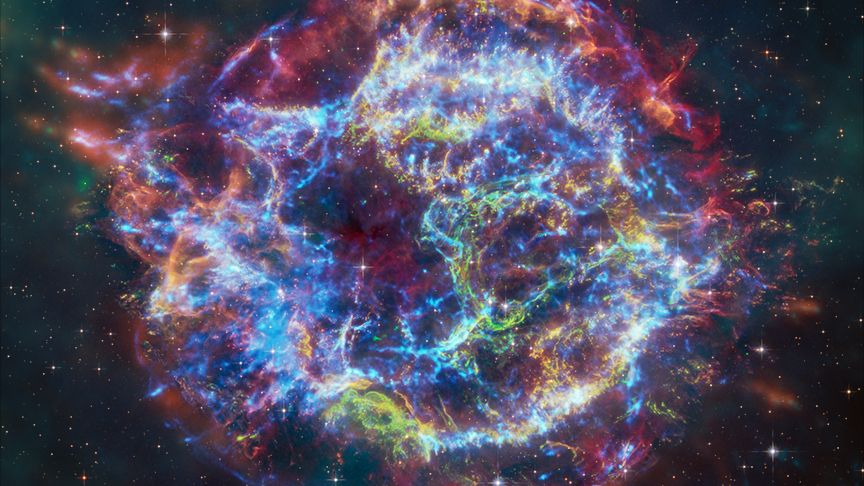Astronomers solve mystery of 'Green Monster' in famous supernova remnant (photo)
By Sharmila Kuthunur published about 9 hours ago
'We've never had this kind of look at an exploded star before.'

a giant shell of wispy blue, green, yellow and red light glows against the blackness of space in a photo by space telescopes.
This image of the supernova remnant Cassiopeia A combines data from NASA's Chandra, James Webb, Hubble and Spitzer space telescopes. (Image credit: X-ray: NASA/CXC/SAO; Optical: NASA/ESA/STScI; IR: NASA/ESA/CSA/STScI/Milisavljevic et al., NASA/JPL/CalTech; Image Processing: NASA/CXC/SAO/J. Schmidt and K. Arcand)
The bizarre, grinch-like wisp of green light dubbed the Green Monster, first seen last year snaking through the glowing remnants of an exploded star, belongs to a blast wave bordering the debris field, a new study reveals.
Last April, NASA's James Webb Space Telescope (JWST or Webb) photographed the unusual "wall of emission" in front of Cassiopeia A (or Cas A), an expanding shell of hot gas roughly 11,000 light-years from Earth whose light first reached us 340 years ago. For the past year, astronomers have been trying to explain its origin and presence in the well-studied supernova remnant.
The new image, unveiled on Monday (Jan. 8) at the American Astronomical Society conference being held in New Orleans and online, combines the observing powers of Webb, as well as NASA's Hubble, Spitzer and Chandra space telescopes, to feature Cas A in unprecedented detail. The ball of light, which stretches for 10 light-years, appears infused with red clouds, revealing dust likely warmed as it resides within gas that was heated up to millions of degrees. White, green and orange light streaks sprinkled throughout offer a cosmically messy, breathtaking new view of the stellar debris.
Also a scientific treasure trove, the snapshot has taken astronomers a step closer to understanding how the mysterious Green Monster came to be. New observations show that its X-ray properties match those of outer regions of the supernova debris field, suggesting that the curious feature was created when a blast wave slammed into material already shed by the ill-fated star, between 10,000 and 100,000 years prior to its explosion.
More:
https://www.space.com/james-webb-space-telescope-green-monster-supernova-remnant?utm_source=notification

Keep your hat close, you never know when you'll need it.

